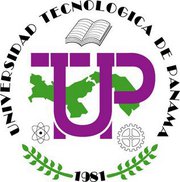Team:UTP-Panama/Safety
From 2011.igem.org
m (→Safety Issues) |
m (→Safety Issues) |
||
| Line 30: | Line 30: | ||
== Safety Issues == | == Safety Issues == | ||
| - | ;1- | + | ;1- For Researcher: |
Since our project is based on using the existent BioBricks for engineering devices, we do not have new safety issues in our project for researchers & students. | Since our project is based on using the existent BioBricks for engineering devices, we do not have new safety issues in our project for researchers & students. | ||
| - | ; | + | ; For the Environment: |
The potencial risk of liberating a GMO (for nitration sensing and fixation, for example) into the environment should always be observed, since GMO ecological interactions have not been tested or studied enough. | The potencial risk of liberating a GMO (for nitration sensing and fixation, for example) into the environment should always be observed, since GMO ecological interactions have not been tested or studied enough. | ||
Revision as of 03:35, 16 July 2011
| Home | Team | Official Team Profile | Project | Parts Submitted to the Registry | Modeling | Notebook | Safety | Attributions |
|---|
- 1- Would any of your project ideas raise safety issues in terms of
- researcher safety,
- public safety, or
- environmental safety?
- 2- Do any of the new BioBrick parts (or devices) that you made this year raise any safety issues? If yes,
- did you document these issues in the Registry?
- how did you manage to handle the safety issue?
- How could other teams learn from your experience?
- 3- Is there a local biosafety group, committee, or review board at your institution?
- If yes, what does your local biosafety group think about your project?
- If no, which specific biosafety rules or guidelines do you have to consider in your country?
- 4- Do you have any other ideas how to deal with safety issues that could be useful for future iGEM competitions? How could parts, devices and systems be made even safer through biosafety engineering?
Safety Issues
- 1- For Researcher
Since our project is based on using the existent BioBricks for engineering devices, we do not have new safety issues in our project for researchers & students.
- For the Environment
The potencial risk of liberating a GMO (for nitration sensing and fixation, for example) into the environment should always be observed, since GMO ecological interactions have not been tested or studied enough.
- 2-About Devices
The devices that we look to improve are non-pathogenic. In the project of Biomaterials, the Curli promoter, promote that E.Coli bacterias do biofilms. This is important to know when we are working with this BioBricks (But easy to control with the properly god lab practices).
- 3- About Biosafety Groups
Our Institution
Our University doesn't have a biosafety group, mainly because we don't have biological & life sciences schools in our University.
But with the emergence of Synthetic Biology, the next step should be to develop it in order to fix limits in experimental projects and make students and professors aware of this. Nevertheless, we have the advise of The Institute for Scientific Research and High Technology Services; their Biosafety section will collaborate with us for lab rules and projects safety observations.
Our country
In Panama, Synthetic Biology doesn't have its own rules, but it follows the rules of government that state the basic instruments of reference to determine procedures, limitations and regulations established to manage GMO and bioethicas issues.
In this sense, the Panamenian Government organized in 2007, the "Development of the National Regulatory Framework on Biosafety for the Republic of Panama" where establish the National Commission on Biosafety (NC).
- 4- Ideas
- Our team is composed of students of engineering degrees, without biological background formation in their careers, for this reason, we propouse tutorials for lab techniques & safety requirements at the beginning of the competition.
- We need a database of information (papers, books, etc) that explains the real implications and issues of using DNA recombinant technology to modify organisms and understand the possible ways to analize their release on the environment. The question is: ¿How do we analize the interactions between new organisms and the environment?
Note: At present, we are consulting and working to establish some comittee to debate about this and other issues that raise from Synthetic Biology inside our University and the whole community.
 "
"
